Idea by
Gennaro Postiglione, Massimo Bricocoli, Stefania Sabatinelli.
ReCoDe
Call for ideas 2021
ReCoDe
ReCoDe
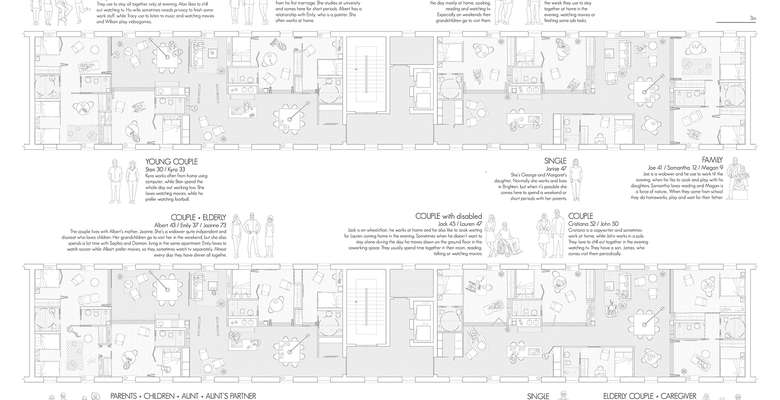
- Systemic changes
ReCoDe typology presents a new way of living that privileges sharing and cohabitation: the collective living spaces have been arranged into continuous multiple places and sizes to accommodate different occupants. The fragmentation of the kitchen in several areas meets the need for simultaneous activities without competition among inhabitants. In contrast, specific areas have been foreseen for children and the elderly, two vulnerable categories requiring special attention. For them, partitions that minimize feelings of loneliness and isolation have been adopted widely by designing large and foldable in-door windows over the living areas. Finally, the private space, the Unit, the new basic element of the layout, is characterized by social interactivity areas thanks to the migration of beds in built-in alcoves.
ReCoDe transforms the infrastructure for a dwelling from the juxtaposition of apartments to a continuous cluster of rooms.
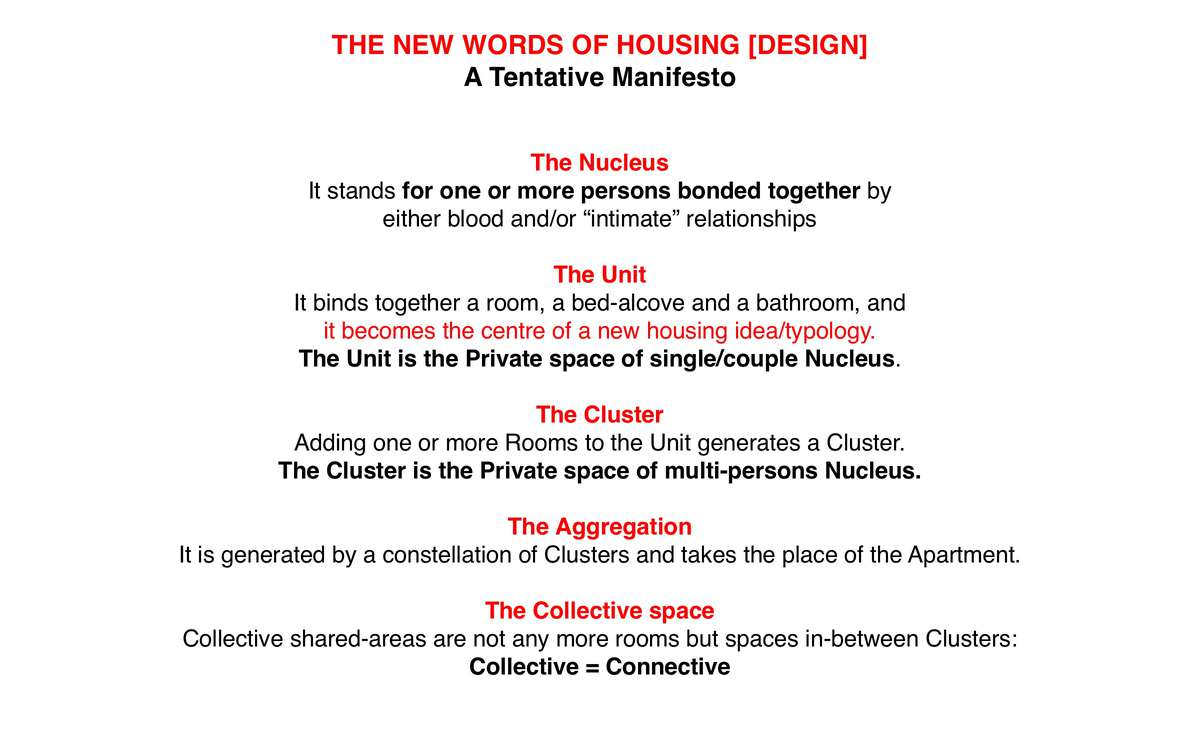
ReCoDe Manifesto

ReCoDe diagrams
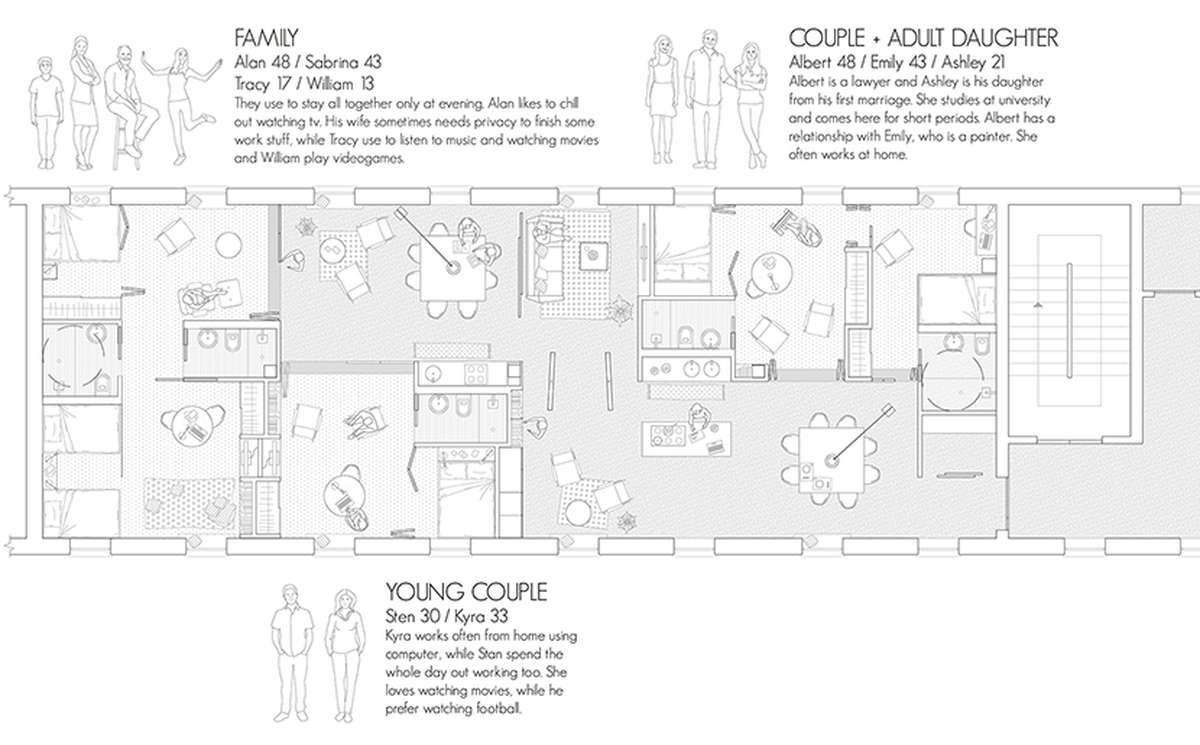
ReCoDe The Aggregation
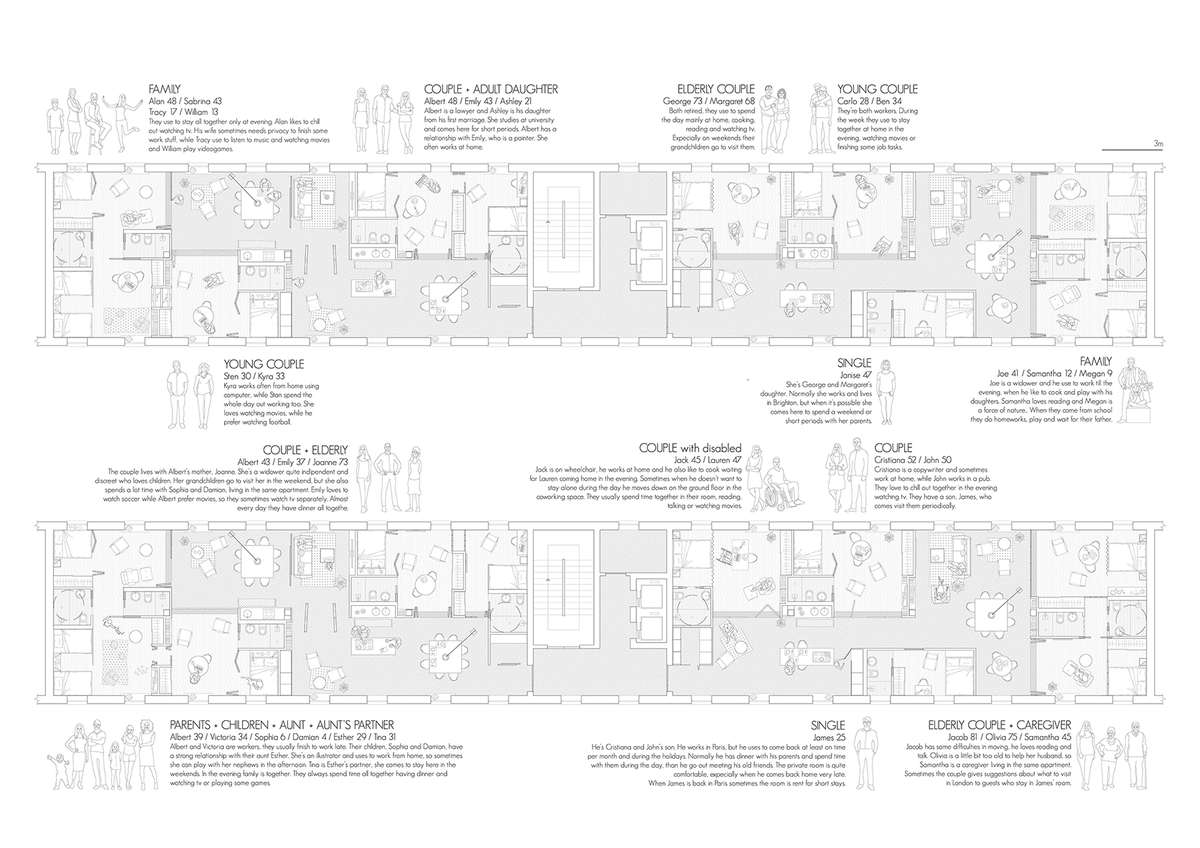
ReCoDe Floor plans
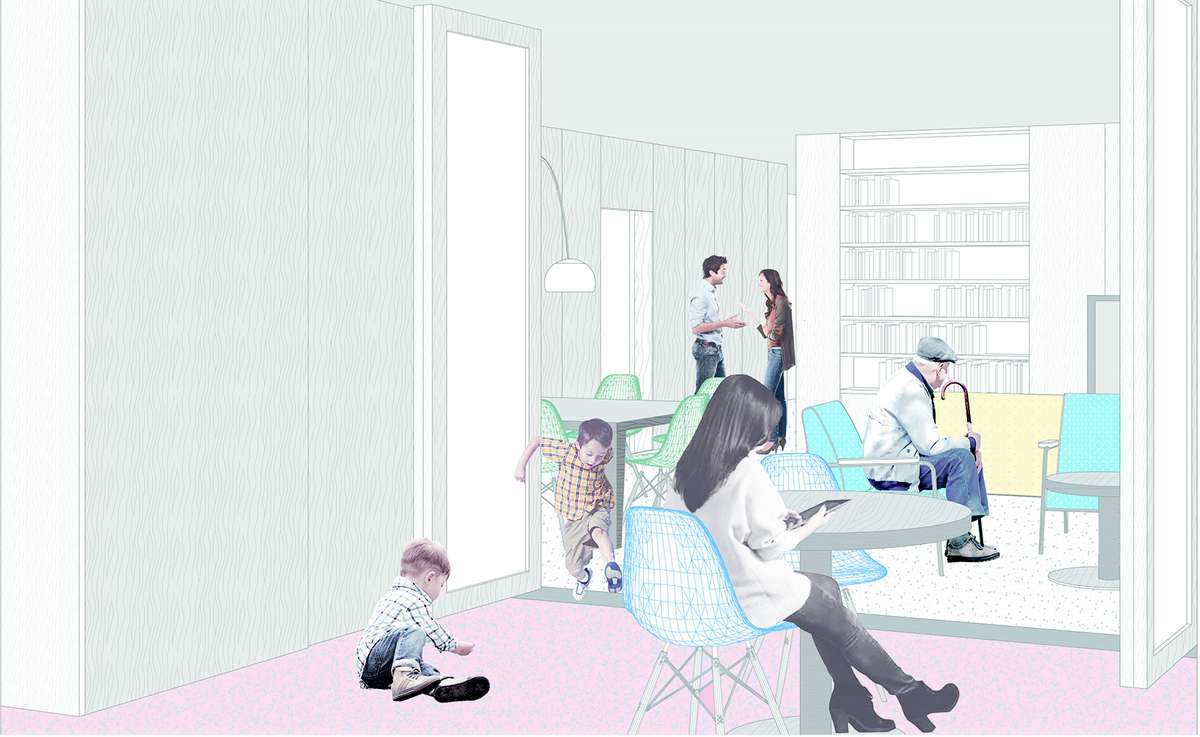
ReCoDe internal view
ReCoDe
ReCoDe

- Systemic changes
ReCoDe typology presents a new way of living that privileges sharing and cohabitation: the collective living spaces have been arranged into continuous multiple places and sizes to accommodate different occupants. The fragmentation of the kitchen in several areas meets the need for simultaneous activities without competition among inhabitants. In contrast, specific areas have been foreseen for children and the elderly, two vulnerable categories requiring special attention. For them, partitions that minimize feelings of loneliness and isolation have been adopted widely by designing large and foldable in-door windows over the living areas. Finally, the private space, the Unit, the new basic element of the layout, is characterized by social interactivity areas thanks to the migration of beds in built-in alcoves.
ReCoDe transforms the infrastructure for a dwelling from the juxtaposition of apartments to a continuous cluster of rooms.
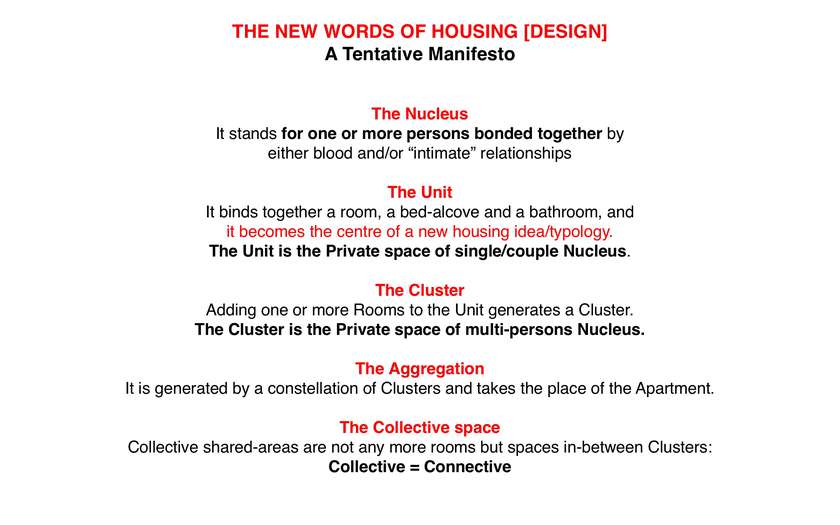
ReCoDe Manifesto
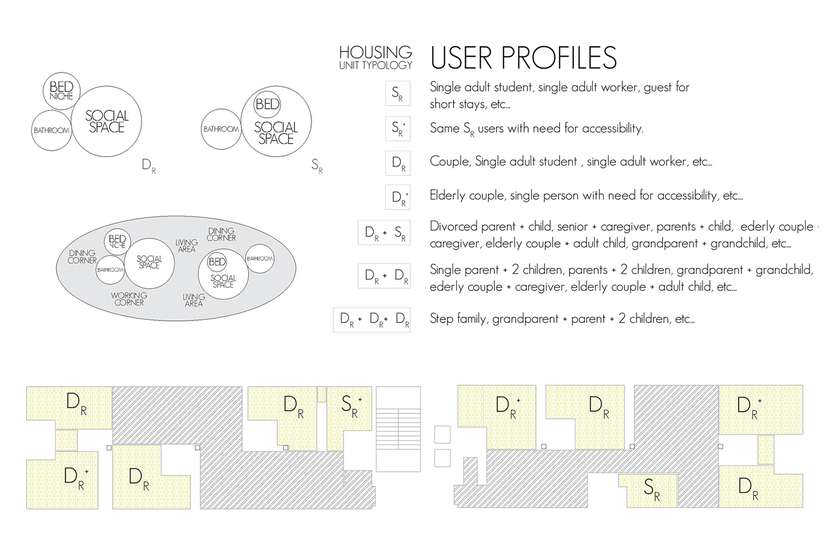
ReCoDe diagrams
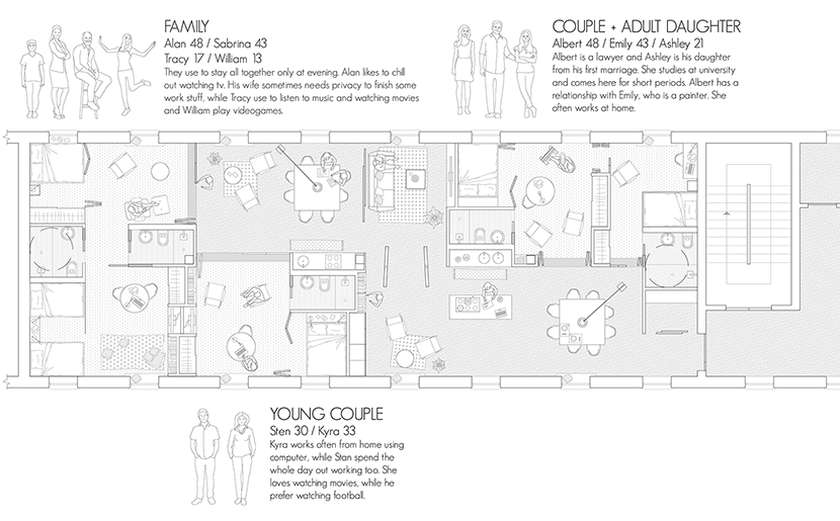
ReCoDe The Aggregation
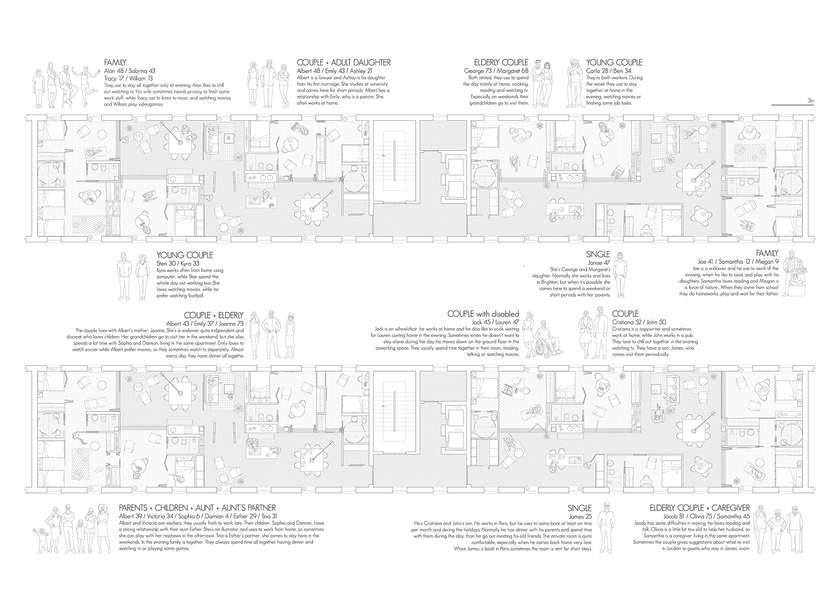
ReCoDe Floor plans

ReCoDe internal view